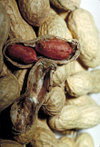Definition
Anaphylaxis is a rapidly progressing, life-threatening allergic reaction.
Description
Anaphylaxis is a type of allergic reaction, in which the immune system responds to otherwise harmless substances from the environment. Unlike other allergic reactions, however, anaphylaxis can kill. Reaction may begin within minutes or even seconds of exposure, and rapidly progress to cause airway constriction, skin and intestinal irritation, and altered heart rhythms. In severe cases, it can result in complete airway obstruction, shock, and death.
Causes & symptoms
Causes
Like the majority of other allergic reactions, anaphylaxis is caused by the release of histamine and other chemicals from mast cells. Mast cells are a type of white blood cell and they are found in large numbers in the tissues that regulate exchange with the environment: the airways, digestive system, and skin.
On their surfaces, mast cells display antibodies called IgE (immunoglobulin type E). These antibodies are designed to detect environmental substances to which the immune system is sensitive. Substances from a genuinely threatening source, such as bacteria or viruses, are called antigens. A substance that most people tolerate well, but to which others have an allergic response, is called an allergen. When IgE antibodies bind with allergens, they cause the mast cell to release histamine and other chemicals, which spill out onto neighboring cells.
The interaction of these chemicals with receptors on the surface of blood vessels causes the vessels to leak fluid into surrounding tissues, causing fluid accumulation, redness, and swelling. On the smooth muscle cells of the airways and digestive system, they cause constriction. On nerve endings, they increase sensitivity and cause itching.
In anaphylaxis, the dramatic response is due both to extreme hypersensivity to the allergen and its usually systemic distribution. Allergens are more likely to cause anaphylaxis if they are introduced directly into the circulatory system by injection. However, exposure by ingestion, inhalation, or skin contact can also cause anaphylaxis. In some cases, anaphylaxis may develop over time from less severe allergies.
Anaphylaxis is most often due to allergens in foods, drugs, and insect venom. Specific causes include:
- Fish, shellfish, and mollusks
- Nuts and seeds
- Stings of bees, wasps, or hornets
- Papain from meat tenderizers
- Vaccines, including flu and measles vaccines
- Penicillin
- Cephalosporins
- Streptomycin
- Gamma globulin
- Insulin
- Hormones (ACTH, thyroid-stimulating hormone)
- Aspirin and other NSAIDs
- Latex, from exam gloves or condoms, for example.
Exposure to cold or exercise can trigger anaphylaxis in some individuals.
Symptoms
Symptoms may include:
- Urticaria (hives)
- Swelling and irritation of the tongue or mouth
- Swelling of the sinuses
- Difficulty breathing
- Wheezing
- Cramping, vomiting, or diarrhea
- Anxiety or confusion
- Strong, very rapid heartbeat (palpitations)
- Loss of consciousness.
Not all symptoms may be present.
Diagnosis
Anaphylaxis is diagnosed based on the rapid development of symptoms in response to a suspect allergen. Identification of the culprit may be done with RAST testing, a blood test that identifies IgE reactions to specific allergens. Skin testing may be done for less severe anaphylactic reactions.
Treatment
Emergency treatment of anaphylaxis involves injection of adrenaline (epinephrine) which constricts blood vessels and counteracts the effects of histamine. Oxygen may be given, as well as intravenous replacement fluids. Antihistamines may be used for skin rash, and aminophylline for bronchial constriction. If the upper airway is obstructed, placement of a breathing tube or tracheostomy tube may be needed.
Prognosis
The rapidity of symptom development is an indication of the likely severity of reaction: the faster symptoms develop, the more severe the ultimate reaction. Prompt emergency medical attention and close monitoring reduces the likelihood of death. Nonetheless, death is possible from severe anaphylaxis. For most people who receive rapid treatment, recovery is complete.
Prevention
Avoidance of the allergic trigger is the only reliable method of preventing anaphylaxis. For insect allergies, this requires recognizing likely nest sites. Preventing food allergies requires knowledge of the prepared foods or dishes in which the allergen is likely to occur, and careful questioning about ingredients when dining out. Use of a Medic-Alert tag detailing drug allergies is vital to prevent inadvertent administration during a medical emergency.
People prone to anaphylaxis should carry an "Epi-pen" or "Ana-kit," which contain an adrenaline dose ready for injection.
Key Terms
- ACTH
- Adrenocorticotropic hormone, a hormone normally produced by the pituitary gland, sometimes taken as a treatment for arthritis and other disorders.
- Antibody
- An immune system protein which binds to a substance from the environment.
- NSAIDs
- Non-steroidal antiinflammatory drugs, including aspirin and ibuprofen.
- Tracheostomy tube
- A tube which is inserted into an incision in the trachea (tracheostomy) to relieve upper airway obstruction.
Further Reading
For Your Information
Books
- Holgate, Stephen T., and Martin K. Church. Allergy. London/New York: Gower Medical Publishing, 1993.
- Lawlor G.J. Jr., T.J. Fischer, and D.C. Adelman. Manual of Allergy and Immunology. Boston/New York/Toronto/London: Little, Brown and Co., 1995.
- Novick, N.L. You Can Do Something About Your Allergies. New York/ Oxford/Singapore/Sydney: Macmillan, 1994.
Other
- Merck Manual On line http://www.merck.com/!!qpRmU0yhYqpRmU2PGT/pubs/mmanual/
Gale Encyclopedia of Medicine. Gale Research, 1999.



